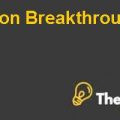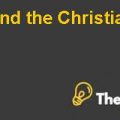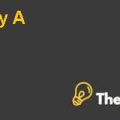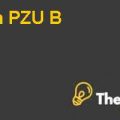Cirque Du Soleil
Summary of backgrounds and facts
Cirque Du Soleil is a circus, which was founded by groups of road performers in 1984. Those groups of street performers were known as Le Club Des Talons Hauts that means high-heels club. Few members of those street performers are still with the company like Laliberte, who is now the Chief Executive Officer and President as well. When the company began its operation in 1984, there were only 73 employees and now the company has more than 4000 employees globally. The company is known to be one of the most important Canadian entertainment companies with its global presence in more than 200 cities in five continents.
Employees and workers of Cirque Du Soleil include 500 artists like clowns, mimes, musicians, acrobats, productions professionals and gymnasts. The workforce of the circus is based on more than 40 nationalities with more than 25 languages spoken by the employees. Shows that have been presented by Cirque Du Soleil include: Le Cirque Du Soleil, La Magie continue, We Reinvent the circus, Tour with Cirque Kine, Nouvelle Experience, Fascination, Saltimbanco, Mystere, Alegria, Quidam, O, La Nouba, Dralion and Varekai (Vijayyaraghavan & Delong, 2011).
Statement of core problem
Core problem identified in the case is related to hiring and retaining employees in the organization. Retaining employees are important for the company because companies engaged in entertainment are solely based on having creative employees. This theory is especially applicable on Cirque Du Soleil because the business of the company is circus without animals. Management of the company needs to make their employees satisfied and content with their jobs so as to make most out of them and to make business profitable in the long-run. Research and development of the company also includes hiring and recruiting of employees that is often a time-consuming and costly procedure. From the company CEO’s viewpoint, to hire one talented person, the company needs to jump into database of around 20,000 acts from all over the world.
During the process of hiring and recruiting, the company needs to analyze five major characteristics in candidates that are accountability, creativity, passion, commitment and team-play. Initially, the newly hired employee spends his time in the process of learning the company’s environment and applies it on their jobs.
Secondary problem
There were many secondary issues faced by the company that was a hurdle for the company’s success; thus, they should be resolved. Firstly, cultural difference was a big issue among employees of Cirque Du Soleil as they are from various cultural backgrounds and they need to make adjustments according to the Canadian lifestyles. In addition to that, training was also a Human Resource problem that people from all over the world felt difficulties in bending according to the requirements of Cirque Du Soleil. Further, corporate culture of Cirque Du Soleil has become one of the major issues. To solve that, performers are trained for nearly six months; they are given empowerment to give their views and ideas about the performance. Moreover, they were given a bucket full of opportunities in terms growth both personally and professionally. As a result of cultural differences, communication problem arise as well because people from different countries do not understand the languages spoken by others. Besides that, the company has re-invented circus and as a consequence of this, the market has become stagnant and growth will suffer. Additionally, injuries of performers during the performances are other major constraints for the Cirque Du Soleil’s business (Bohalnder & Snell, 2012)
Solutions
Offering attractive benefits and packages:
In order to retain employees, Laliberte and Gautier can offer attractive and competitive packages and benefits to their employees. Increase in benefits and packages motivate employees to stay in Cirque Du Soleil. These benefits may include giving health insurance and benefits with respect to their health risk because the lives of performers are always at risk and the injury rate is also very high. Further, additional benefits like telecommuting and flexible working hours is a way to show the artist in Cirque that they are important and being valued as well (Bohalnder & Snell, 2012).
Fostering artist and performer’s development:
Training in terms of development should be given to employees so that new skills and expertise can be developed. In this way, performers may find a path to see themselves self-motivated in the organization and certain about their own success.
Cirque du Soleil Case Solution
Open-communication:
Performers and artists like to feel connected with Cirque Du Soleil, therefore; the management at Cirque Du Soleil should focus on creating open communication between management and the artists of the company (Randy, Vivienne, & Thomas, 2010).
Have one human resource professional:
Although, Murielle Cantin as a casting director has performed tremendously during the past years and is still good in gathering talent all around the world but still Cirque Du Soleil should have one human resource professional as well. Cirque Du Soleil required 50 new artists every two years in the past and ....................
This is just a sample partial case solution. Please place the order on the website to order your own originally done case solution.
Saving talent is a challenge for any company whose success is based on the creativity and skill of its employees. This is especially true for the Cirque du Soleil, spectacularly successful "circus without animals," whose 2,100 employees include 500 artists - mimes, clowns, acrobats, gymnasts, musicians and production professionals. Management of the company is full of creative people juggling itself, between keeping their artists happy and conducts successful strategies to attract more business and talent. "Hide
by Thomas J. DeLong, Vineeta Vijayaraghavan Source: HBS Premier Case Collection 12 pages. Publication Date: July 18, 2002. Prod. #: 403006-PDF-ENG











